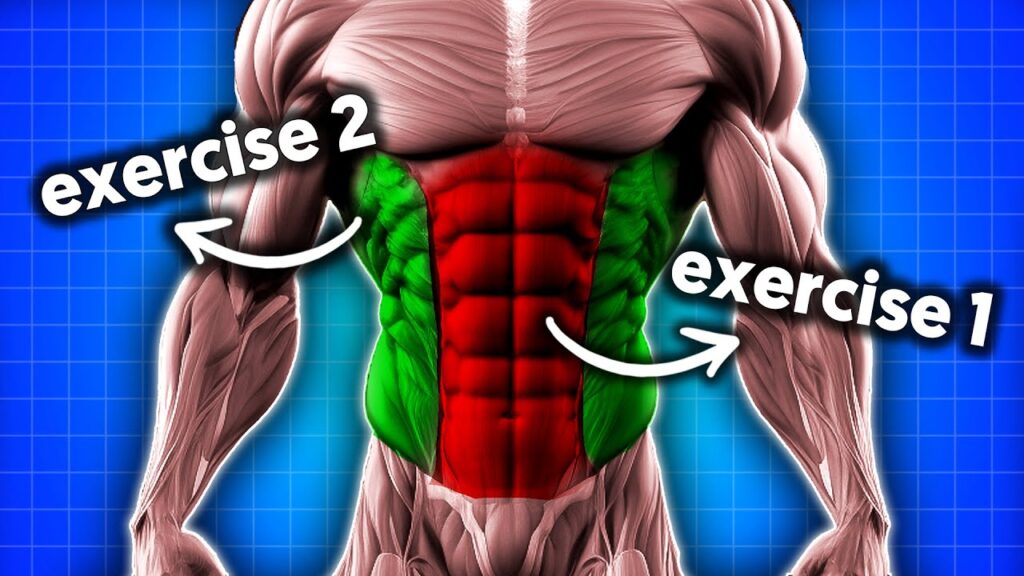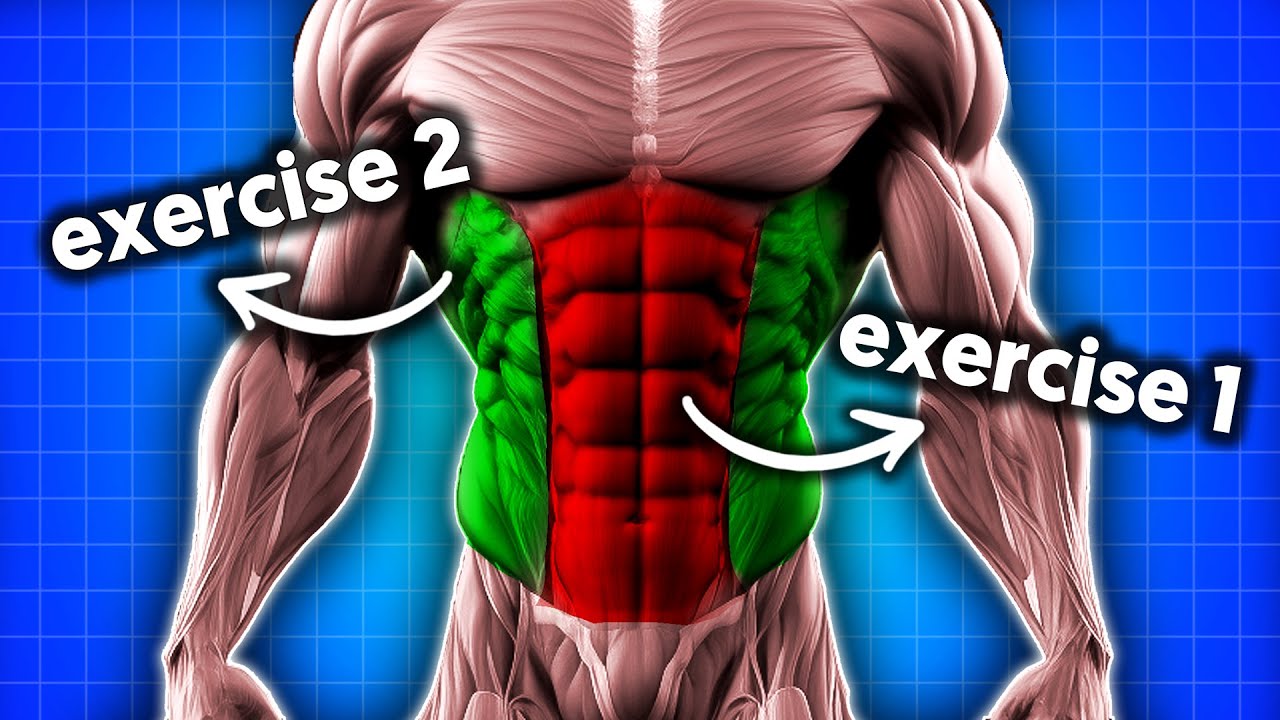Are you tired of doing countless crunches and not seeing the results you want? Well, I’ve got some good news for you. In this article, I’m going to share with you the ultimate two exercises that will transform your flabby abdominal muscles into your dream six-pack. And the best part? You only need these two exercises and the right technique. No complicated moves or extra equipment required. We’ll also discuss how genetics play a role in achieving abs and explore the various benefits of planks and crunches. So, if you’re ready to finally achieve those washboard abs, keep reading.
The first exercise we’ll dive into is planks. Planks are not only the best exercise for strengthening your core and abdomen, but they also have a range of benefits such as improving posture and flexibility. We’ll discuss different variations of planks and how they target different muscle groups. And if you’re wondering about crunches, don’t worry, we’ll cover that too. Crunches are a timeless exercise that primarily targets the abdominal muscles and can help build muscle mass and strengthen your core. Plus, we’ll explore other exercises such as V crunches, side lying crunches, exercise ball crunches, bicycle crunches, vertical leg crunches, and seated knee tucks that can strengthen and tone your abs. So, get ready to say goodbye to those flabby abs and hello to a rock-solid six-pack.

The Role of Genetics in Achieving Six-Pack Abs
Introduction to genetics and its influence on physical appearance
Genetics plays a significant role in determining an individual’s physical appearance, including the development and visibility of abdominal muscles. Certain genetic factors can affect how easily someone can achieve six-pack abs. While genetics cannot be changed, understanding these factors can help individuals set realistic goals and make informed decisions about their fitness journey.
Understanding the genetic factors that contribute to abdominal muscle development
Abdominal muscle development is influenced by various genetic factors, including muscle fiber type, body fat distribution, and metabolism. Some individuals may have a genetic predisposition for faster muscle growth and definition, while others may struggle to develop visible abs despite intense exercise and proper nutrition. It is important to recognize that genetic factors are beyond our control and vary from person to person.
The impact of genetics on body fat distribution
Genetics plays a role in determining where the body stores fat. Some individuals may naturally carry more fat in the abdominal area, making it more challenging to achieve visible abs. This distribution is influenced by genetic factors such as hormone levels and the activity of specific genes related to fat metabolism. While targeted exercises can help strengthen abdominal muscles, reducing overall body fat percentage through a calorie deficit is crucial to achieving visible abs.
The role of genetics in muscle growth and definition
Genetics can influence the rate and extent of muscle growth and definition. Some people may have a genetic advantage in terms of muscle hypertrophy, allowing them to develop well-defined abdominal muscles more easily. Others may find it more challenging to build muscle mass in the abs, even with consistent exercise and proper nutrition. Understanding these genetic factors can help individuals tailor their workout and nutrition plans accordingly.
The genetic link to metabolism and calorie burn
Metabolism, which refers to the body’s ability to convert food into energy, can vary from person to person based on genetic factors. Some individuals have a naturally faster metabolism, allowing them to burn calories more efficiently. This can contribute to overall fat loss and the visibility of abdominal muscles. However, genetics should not be used as an excuse for a slower metabolism, as lifestyle factors such as exercise and diet can still have a significant impact.
The influence of genetics on recovery and muscle repair
Genetics can also influence an individual’s ability to recover and repair muscles after intense exercise. Some individuals may have a genetic advantage in terms of muscle recovery, allowing them to train more frequently and effectively. Proper recovery is essential for muscle growth and development, including the abdominal muscles. Understanding these genetic factors can help individuals identify the optimal balance between training intensity and recovery periods.
Exploring the genetic variations that may affect the achievement of six-pack abs
Research suggests that specific genetic variations are associated with the achievement of six-pack abs. These variations include genes related to metabolism, muscle structure, and fat distribution. While these genetic variations can influence an individual’s predisposition for visible abs, it is important to note that other factors such as diet, exercise, and lifestyle choices still play a significant role in achieving this goal.
The role of genes in determining muscle fiber type
Muscle fibers can be categorized into two main types: slow-twitch and fast-twitch. Genetics play a role in determining the proportion of these muscle fibers in an individual’s body. Those with a higher proportion of fast-twitch muscle fibers may have a genetic advantage in terms of muscle growth and strength. However, individuals with a higher proportion of slow-twitch muscle fibers can still achieve well-defined abs through targeted exercises and progressive overload.
The genetic predisposition for high or low abdominal muscle visibility
Genetics can also influence an individual’s natural predisposition for high or low abdominal muscle visibility. Some individuals may naturally have more defined abs due to genetic factors such as muscle size, fat distribution, and connective tissue structure. However, it is important to remember that everyone can improve the visibility of their abs through exercise, proper nutrition, and a healthy lifestyle.
The impact of genetic factors on muscle shape and symmetry
Genetic factors can also affect the shape and symmetry of an individual’s muscles, including the abdominal muscles. Some people may have a genetic advantage in terms of muscle shape, allowing their abs to appear more symmetrical and well-defined. However, muscle shape and symmetry can be improved through targeted exercises that target specific muscle groups and proper form during workouts.
The Key Exercises for Achieving Six-Pack Abs
The importance of planks in abdominal muscle development
Planks are considered one of the best exercises for abdominal muscle development. They engage the entire core, including the rectus abdominis, transverse abdominis, and obliques. The plank exercise involves holding the body in a straight, in-line position, resembling a plank of wood. This exercise targets both the superficial and deep abdominal muscles, leading to improved strength and definition.
Different variations of planks for optimal results
To maximize the effectiveness of planks, it is crucial to incorporate various plank variations into your workout routine. Popular variations include side planks, reverse planks, and walking planks. These variations target different muscle groups, challenge stability, and add variety to your ab workout. By incorporating different plank variations, you can ensure that all areas of the core are targeted for balanced muscle development.
The benefits of planks for strengthening the core and abdomen
Planks offer numerous benefits beyond abdominal muscle development. They are highly effective in strengthening the entire core, including the back, hips, and shoulders. By engaging multiple muscle groups simultaneously, planks improve overall core stability, balance, and coordination. Furthermore, planks can help improve posture by strengthening the back and promoting proper alignment of the spine.
Improving posture and flexibility through plank exercises
One of the notable benefits of planks is their ability to improve posture. Maintaining a plank position strengthens the muscles responsible for supporting proper posture, including the back, shoulders, and neck. By strengthening these muscles, planks help alleviate common issues associated with poor posture, such as rounded shoulders and a forward head position. Additionally, planks can enhance flexibility, particularly in the hamstrings and arches of the feet.
The effectiveness of crunches in targeting the abdominal muscles
Crunches are a classic abdominal exercise that primarily targets the rectus abdominis, the muscle responsible for the “six-pack” appearance. Unlike planks, crunches involve a dynamic movement that involves flexing the spine and lifting the upper body. While crunches are effective in targeting the abdominal muscles, it is important to perform them with proper form to avoid strain on the neck and lower back.
The variations of crunches for a well-rounded ab workout
Similar to planks, there are various crunch variations that can be incorporated into your workout routine for a comprehensive ab workout. These variations include reverse crunches, bicycle crunches, vertical leg crunches, and exercise ball crunches. Each variation targets different aspects of the abdominal muscles, ensuring all areas are effectively engaged and stimulated for muscle growth and definition.
Building muscle mass and core strength with crunches
Crunches are not only effective in targeting the abdominal muscles but also in building muscle mass and core strength. By progressively increasing the intensity and resistance of crunch exercises, individuals can achieve both muscle growth and improved core strength. It is important to perform crunches with proper technique and gradually increase the difficulty level to avoid injury and ensure optimal results.
Combining planks and crunches for maximum impact
To achieve maximum impact in abdominal muscle development, it is beneficial to combine planks and crunches into a well-rounded ab workout. Planks target the deep core muscles and improve stability, while crunches target the superficial abdominal muscles and promote muscle growth and definition. By incorporating both exercises, individuals can effectively engage all areas of the core and achieve a balanced and sculpted midsection.
The advantages of incorporating additional exercises for abs
While planks and crunches are key exercises for achieving six-pack abs, incorporating additional exercises can further enhance results and target specific muscle groups. Exercises such as V crunches, side lying crunches, and bicycle crunches can provide different angles of muscle activation, promoting further muscle growth and development. It is important to include a variety of exercises to avoid plateaus and ensure continuous progress.
Exploring exercises like V crunches, side lying crunches, and bicycle crunches
V crunches, side lying crunches, and bicycle crunches are effective exercises for targeting specific areas of the abdominal muscles. V crunches involve lifting both the upper body and legs simultaneously, engaging the upper and lower abs. Side lying crunches focus on the oblique muscles, enhancing definition and symmetry. Bicycle crunches target the rectus abdominis and obliques, offering a dynamic movement that mimics a cycling motion.

Other Factors Influencing Six-Pack Abs
The impact of diet on achieving visible abs
Achieving visible abs is not solely dependent on exercise; diet also plays a crucial role. In order to reduce body fat percentage and reveal abdominal muscles, it is important to maintain a calorie deficit. This requires consuming fewer calories than the body burns, leading to fat loss. A balanced diet rich in lean protein, healthy fats, and complex carbohydrates can support muscle growth and definition.
The role of calorie deficit in reducing body fat percentage
Creating a calorie deficit is essential for reducing body fat percentage and achieving visible abs. This can be achieved through a combination of a balanced diet and regular exercise. When the body is in a calorie deficit, it will utilize stored fat as a source of energy, leading to gradual fat loss. However, it is important to create a moderate calorie deficit to ensure sustainable weight loss and muscle preservation.
The importance of a balanced diet for muscle growth and definition
A balanced diet is crucial for muscle growth, strength, and definition. Consuming adequate amounts of protein, carbohydrates, and healthy fats provides the necessary nutrients for muscle repair and growth. Protein, in particular, is essential for muscle recovery, as it provides the building blocks for muscle tissue repair. In addition to macronutrients, a diet rich in vitamins, minerals, and antioxidants can support overall health and optimize muscle development.
The significance of overall body composition in ab visibility
Visible abs are influenced not only by abdominal muscle development but also by overall body composition. A low body fat percentage is necessary to reveal the abdominal muscles. While targeted exercises can strengthen and define the abs, reducing overall body fat through a combination of diet and exercise is crucial for achieving a six-pack. This requires a holistic approach that addresses both muscle development and fat loss.
The influence of exercise frequency and intensity on achieving six-pack abs
The frequency and intensity of exercise play a significant role in achieving six-pack abs. Consistency is key in building and maintaining muscle mass, as regular exercise stimulates muscle growth and prevents muscle loss. High-intensity workouts, such as interval training and strength training, can further enhance muscle growth and fat loss. It is important to strike a balance between exercise frequency and intensity to avoid overtraining and promote optimal results.
The role of proper rest and recovery in muscle development
Proper rest and recovery are crucial for muscle development, including the abdominal muscles. Muscles need time to repair and rebuild after intense exercise. Sleep plays a vital role in this process, as it is when the body releases growth hormones and facilitates muscle repair. Additionally, incorporating rest days into your workout routine allows muscles to recover and prevents overuse injuries. Prioritizing rest and recovery is essential for achieving six-pack abs and overall fitness.
The potential benefits of supplementation for enhancing ab definition
Supplementation may offer potential benefits for individuals looking to enhance ab definition. Certain supplements, such as protein powder, creatine, and branched-chain amino acids (BCAAs), can support muscle growth and recovery. However, it is important to remember that supplements are not a substitute for a balanced diet and proper exercise. Consulting with a healthcare professional or registered dietitian is recommended before incorporating supplements into your routine.
The impact of lifestyle factors on six-pack abs
Lifestyle factors, such as stress, sleep quality, and alcohol consumption, can impact the achievement of six-pack abs. Chronic stress releases cortisol, a hormone that can lead to increased fat storage, particularly in the abdominal area. Quality sleep is essential for muscle repair and growth, as well as overall health. Excessive alcohol consumption can inhibit muscle recovery and lead to empty calorie intake. It is important to maintain a healthy lifestyle that supports overall well-being to optimize results.
The importance of consistency and determination in reaching ab goals
Achieving six-pack abs requires consistency, determination, and patience. It is essential to adhere to a regular exercise routine, maintain a balanced diet, and make sustainable lifestyle choices. Visible abs do not appear overnight and require dedicated effort over time. Setting realistic goals and focusing on progress rather than perfection can help individuals stay motivated and committed to their fitness journey.
The role of mindset and positive thinking in fitness success
Mindset and positive thinking play a significant role in achieving fitness success, including the development of six-pack abs. A positive mindset can help individuals overcome challenges, stay motivated, and maintain consistency. It is important to focus on the journey rather than the end result, celebrating small victories along the way. Practicing self-compassion and embracing a growth mindset can foster a healthy relationship with fitness and support long-term success.

Conclusion
Genetics play a significant role in the achievement of six-pack abs. While certain genetic factors can influence muscle growth, definition, and fat distribution, it is important to remember that a combination of targeted exercises, proper nutrition, and lifestyle choices can optimize results. Incorporating exercises such as planks and crunches can effectively engage the abdominal muscles and promote strength and definition. Creating a calorie deficit through a balanced diet and regular exercise is essential for reducing body fat percentage and revealing visible abs. Consistency, determination, and a positive mindset are key in the journey towards achieving six-pack abs. Before starting any new exercise or diet program, it is advisable to consult with a healthcare professional to ensure safety and suitability.
